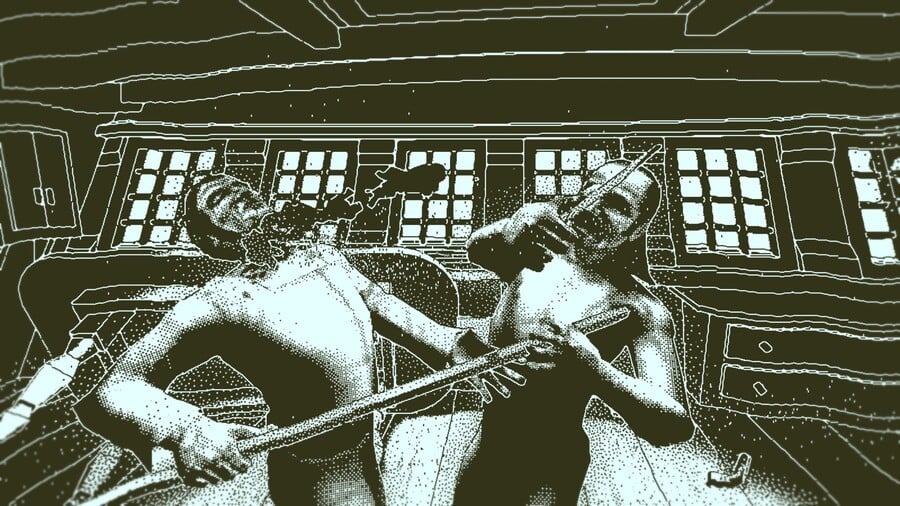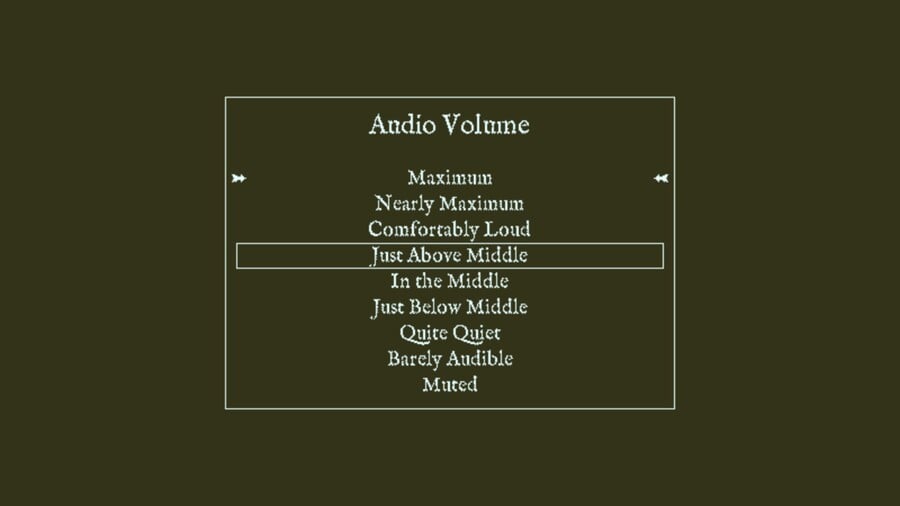Feature: Backlog Club: Return Of The Obra Dinn Is A Masterpiece Of Deduction And Atmosphere
This article is part of our new experimental series, Backlog Club, where we (Nintendo Life!) pick a game that’s likely to be on our list of “games we should get around to playing”, and then we (NL + you!) spend the next month playing that game. This is the halfway point, the Part One of two, where we stop for a minute to check in with the game, and how much we’re enjoying it.
For June 2022, the vote decided on Return of the Obra Dinn, and god, it’s good, isn’t it?

I never did homework as a kid. Not because I didn’t like to learn, mind you — I’m a big fan of books and that — but because it all felt a bit pointless sometimes. Since the homework grades didn’t count towards your end-of-year grade (which was the only thing that actually mattered), then it seemed like a waste of my very limited free time. I got good grades, why did I need to do extra work, too?
But one thing I did love was logic puzzles. I would get these gigantic magazines full of them for birthdays and Christmas, with plenty of picrosses to solve and those grids where you have to decide which person ordered the salmon on a Tuesday. I would happily, voluntarily do this homework-like activity, because it challenged me, and it provided me with that tasty, tasty dopamine from a job well done.
Return of the Obra Dinn, Lucas Pope’s tangly, piratical work of logic puzzlery, gives me that same hit of dopamine — but much, much larger. As much as I loved those puzzle omnibuses, they didn’t have music. They didn’t have visuals. I didn’t get to see Andrew eating salmon on a Tuesday, or Susan being speared through the heart on a Thursday. And, as it turns out, everything is more fun when it’s pirate-themed.
ROTOD begins on a boat. Not the boat, mind you. Not the Obra Dinn. You begin on a rowboat, but you don’t know that immediately — you’re greeted by a screen the colour of seasick and the voice of a grumpy man, tasked with escorting you to the Obra Dinn. When you reach the Obra Dinn, and clamber up its sides, you come face to face with death almost immediately: There’s a corpse, festering away, right there on the deck.
Murder! Mystery! Maggots, probably! Your mind reels with the possibilities. You’re excited to find out more.
As the player, you don’t know what to do. You don’t know who you are, or why you’re here. Your avatar in this world is naught but a pair of hands and the occasional voice line, with the instruction to investigate the Obra Dinn. But oooh, isn’t a corpse an exciting thing to find? It carries so much potential: Murder! Mystery! Maggots, probably! Your mind reels with the possibilities. You’re excited to find out more.
That’s when your ferryman calls out: “Oiiii! It’s too ‘eavy!” Returning to him, you take the cargo that you brought with you: A book, and a watch. The book is empty. The watch is magic.
Like the logic puzzles of my childhood, Obra Dinn expects me to make simple deductions. How did the crew of the Obra Dinn perish? But it’s not as simple as that, not really — they all died in different ways, killed by different people, perils, and plot twists, and it’s through watching each of their final minutes of life that you’ll have to find out these facts, as well as their identities. Some are clear — they’ll say their names, or have some identifying factor on their person — others will take hours, and some clever deductive work, to solve.
So far, I’ve guessed at one person’s identity based on the fact that she’s wearing a wedding ring, and there were only two women on board that I hadn’t identified, and one was a “Miss Jane Bird”. Another I have identified by the fact that he was carrying a lot of guns, which surely means that he is some kind of important gunsman. And it’s only getting harder from there. It turns out that most people, in their final moments of life, aren’t going around yelling their full names, which is understandable, but makes my job a lot harder.

I can’t say I mind too much, though, because the atmosphere is so incredibly delicious. The aesthetics — which are perhaps the most noticeable thing about the game, so it’s weird that I’m mentioning them so far down — have very little to do with the game, and they’re a bit divisive, but I don’t mind. The entire game is done in low-fidelity one-bit graphics, emulating really early PC games. It’s crisp and yet fuzzy at the same time, since everything in-between dark and bright has that “ditherpunk” texture, reminiscent of old computers.
And why did Lucas Pope settle on this look? The answer, from his PlayStation blog, is basically “because why not”, which is extremely admirable:
The original motivation for Obra Dinn was simple: I wanted to make a modern 3D game that looked like the old 1-bit games I played on my family’s Macintosh Plus while growing up.
[image:2.3|4,5][/image]
Obviously, that meant quite a bit of tinkering, adding outlines to everything and making sure that the dithering didn’t just make everything look like a sludgy mess. The almost-illegible one-bit graphics also add to the mechanics of the game: You need to identify people, but their faces are blurry, it’s hard to see how they died, you’re not sure who is who. It would be much easier if it was just a regular 3D game. I’m glad it’s not.
The music is a shanty-esque, bombastic soundtrack that combines staccato strings and ominous tolling bells… it makes me feel like I’m on a pirate ship.
The music, also by Lucas Pope, is a shanty-esque, bombastic soundtrack that combines staccato strings and ominous tolling bells, and even though I’ve never been on a pirate ship, it makes me feel like I’m on a pirate ship. It has the same wonderfully evocative titles as the table of contents in your book: Soldiers of the Sea, Unholy Captives, and The Calling give you an idea of what you might encounter, yet no idea at all.
But it’s the musical stings that make the game tense and compelling. Every time you enter a murder-vignette, every time you use your magical watch, and every time your logic puzzle deductions are confirmed, a frantic little violin riff plays. It makes me feel like I’m in trouble, with a little frisson of nervousness, like the music that plays when your house gets robbed in The Sims. It’s perfect.

I haven’t completed Obra Dinn’s book yet. The game takes its time leading you through the 60 deaths on board the doomed ship, luxuriating in the tension of telling the story from end to beginning, and I can’t say that I mind. I feel like I’m watching a grungy movie about horrible things happening to dithery pirates, slowly pulling at the narrative thread even though I don’t know what’s on the other end. I see glimpses of it — I can log someone’s death as “struck by hooves/leg/wing”, despite the fact that there appear to be few animals on board, and I have seen the tentacles of some great sea-beast — but I cannot yet see the whole, and that’s the best part of a story.
“All will make sense in time,” reads the note that I have from the start. Presumably, Henry Evans — my mystery client — is right, but to be honest, I’m quite enjoying the part where nothing makes sense at all. Homework never felt this fun.
Oh, and one of the best things about Obra Dinn is the developer log that Lucas Pope made alongside the game. But it’s REALLY spoilery. So: Don’t watch it unless you’ve finished, okay? Promise? Okay.
How are you enjoying the game so far? Have you finished it yet? Tell me your thoughts in the comments!













